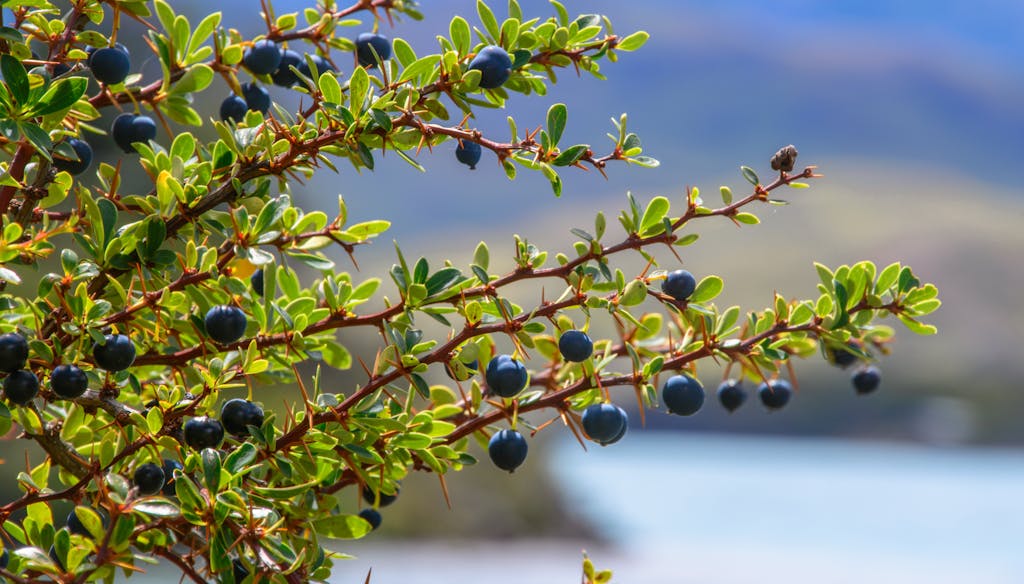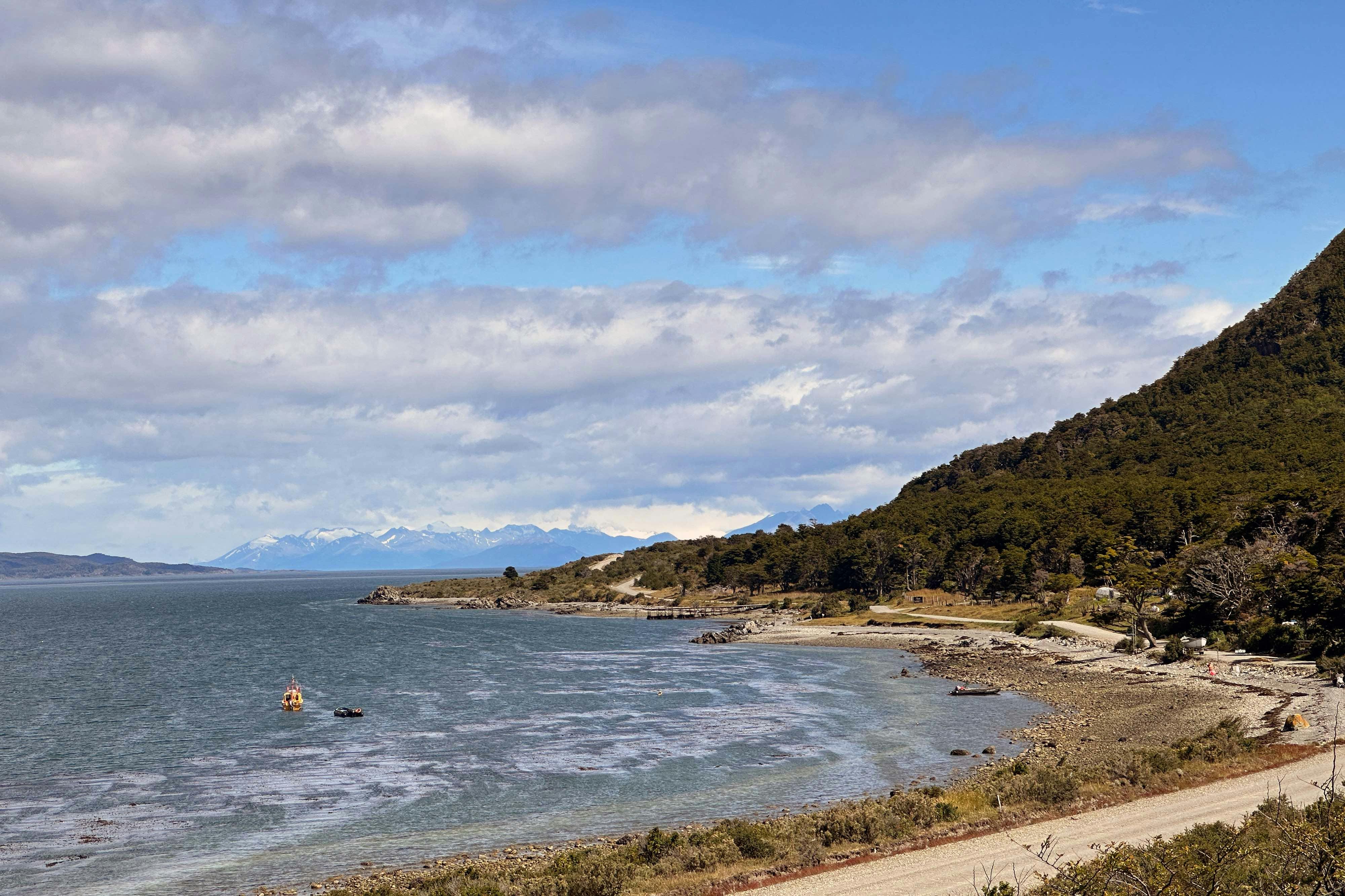S.A.L.T. Experiences: Travel to Patagonia to Taste Food at the End of the World
Ushuaia, on the Beagle Channel and in front of the Martial mountain range, is the southernmost city in the world. As a special stop during any travel to Patagonia, Ushuaia is both the capital of the Argentine province of Tierra del Fuego and also a jumping off-point for trips to Antarctica.
When I took a South America cruise aboard Silver Moon, the highlights for me included excursions to Patagonian glaciers and sea voyages to the Falkland Islands. (Silver Nova and Silver Ray will also be traveling this itinerary.) Although the cultures of the Yaghan and Selk’nam — who lived on this archipelago before colonization — have long been erased, settlers from various parts of the world have taken their place and are trying to find ways to survive in this inhospitable climate. A culinary tour, available through Silversea’s S.A.L.T. program, gives an inside look at how some have managed to live off both the land and sea in this wild terrain.
Exploring the “end of the world”

I have been traveling in this region for about 20 years as a food writer, and I am always amazed at how many of the most fascinating aspects of cuisine in Latin America are inaccessible to tourists. On a trip to Patagonia, sometimes it is something as simple as a bumpy road or some unfamiliar flavor that scares some tour operators from connecting travelers to an authentic culinary experience. This usually results in cliché meals with few surprises.
As we have developed these S.A.L.T. tours in South America, we have been conscious of making sure we present a more rounded idea of cuisine in Patagonia. We can still eat lamb and king crab because they’re amazing here, but we can also try to put these things into context in the wider scope of what people eat in the region.
Nightly in S.A.L.T. Kitchen, as we sail in and out of the fjords of Argentina and Chile on the way to Ushuaia, we try to showcase typical regional foods like the Tierra del Fuego’s southern king crab, such as those from immigrants who settled here or from the native people of these two countries. There is a lamb and seaweed stew, cordero con luche, a combination of two common ingredients here that few outside the region think to pair. I quite enjoyed it. In S.A.L.T. Lab, we also dedicated a class to berries and how they are used in recipes from the ports we were visiting, which was great preparation for this excursion.
The tour: scenery, culture and fantastic berries

The six- to seven-hour excursion includes a round trip-drive to Puerto Almanza, a picturesque fishing village about one hour and 45 minutes away. As you see it from the ship, the city of Ushuaia is gorgeous, with a backdrop of mountains dotted with small glaciers. It’s no wonder the ride is just as scenic.
The van takes us away from the coast and into the interior of Tierra del Fuego, traversing eastward along a road through a valley lined with forests and towering peaks before turning south toward the Beagle Channel.

To break up the long journey, we make several short stops for photos and to stretch our legs. As our guide is pointing out a beaver dam, one of many in the regions, she spots wild berries growing along the roadside. They were calafate berries, which look almost like blueberry but offer a hint of raspberry in the flavor.
It’s one of the region’s most emblematic foods, and calafate jam is sold in almost every shop in Ushuaia. Selk’nam mythology says that whoever eats the fruits of this shrub is destined to make a return trip to Patagonia. Considering we all had some and many of us had some more in Cervecería Austral’s Calafate Ale a couple of days before in Punta Arenas, chances are all of us will be back again.
Puerto Almanza is little more than a strip of a few houses and buildings that line the waterfront. More than a dozen families here fish, particularly for centolla, or king crab, the regional specialty. I may not ever eat it as fresh as I had it this day.

Upon reaching Chacra Ruca Kelleñ, a four-hectare farm, the southernmost farm on Earth, we meet with Andrés Loíza. This former chocolate maker arrived in Patagonia from Bariloche in the 1980s and started working the land in 2011.
“It’s hard farming here,” he tells us. “It’s too cold, and there’s a lot of wind.”
From April to September here in the Southern Hemisphere, everything is covered in snow. Then there are the beaver dams, which can appear in a single night and cause the farm to flood. He points out a flooded area just beside the farm where the beavers had already moved in.

Nonetheless, the farm was thriving. He sought out the vegetables that early settlers once planted, such as potatoes, cabbage and rhubarb, as well as flowers including lilacs and peonies.
But berries were the primary crop here. There were rows and rows of raspberry and currant shrubs, and low-tunnel greenhouses were brimming with bright red juicy strawberries. They are called kelleñ by the indigenous Mapuche, the first to cultivate white strawberries in the southern cone of South America. They were crossbred with other regional varieties around the world to create the strawberries we know today.
Nestled within a thick forest of southern beech trees, the farm is a thriving ecosystem. There are buzzing bees, trees dripping with lichens and the native, edible mushroom known as pan de indio growing in abundance. He’s careful not to disturb that balance; organic and pollinator gardens are found throughout the property. Andrés also rotates the strawberries to other fields, regenerating the soil with rest and cover crops such as oats. He’s aware of the changing climate, which has also allowed him to experiment with different varieties of raspberries as well as gooseberries and other crops.

Eventually, we wander over to the farm’s tea house and café and, while lunch is prepared, taste different juices, jams and vinegars made with the berries, followed by Argentine beers and wines. Shortly thereafter, a spread of local seafoods is served. There are empanadas filled with cholgas (mussels), smoked trout, seafood stews and entire king crab legs with lemon wedges.
Before leaving, bowls of fresh berries with cream and cakes follow for dessert, along with tea and coffee. As we climbed in the van to return to Ushuaia, Andrés passes us a basket of more berries. “For the ride,” he says, and winks.
Inside tips before you go
Have a good breakfast before you head out, because it will be a couple of hours before you eat anything. Carry a rain jacket; even in summertime rain can come out of nowhere in Patagonia. The scenery on the way to the farm is spectacular, including mountains and waterfalls at every turn, so have a fully charged camera ready.
S.A.L.T. Adventures: End of the World Gourmet Experience in Ushuaia is offered on South America itineraries on Silver Nova(2024) and Silver Ray (2025, part of the South American Grand Voyage).
Want to experience more of Patagonia? Start planning your trip by browsing Silversea’s South America cruises, and learn more about travel to Patagonia though this in-depth look at Ushuaia and the way that the S.A.L.T. program explores Latin American cuisine.
